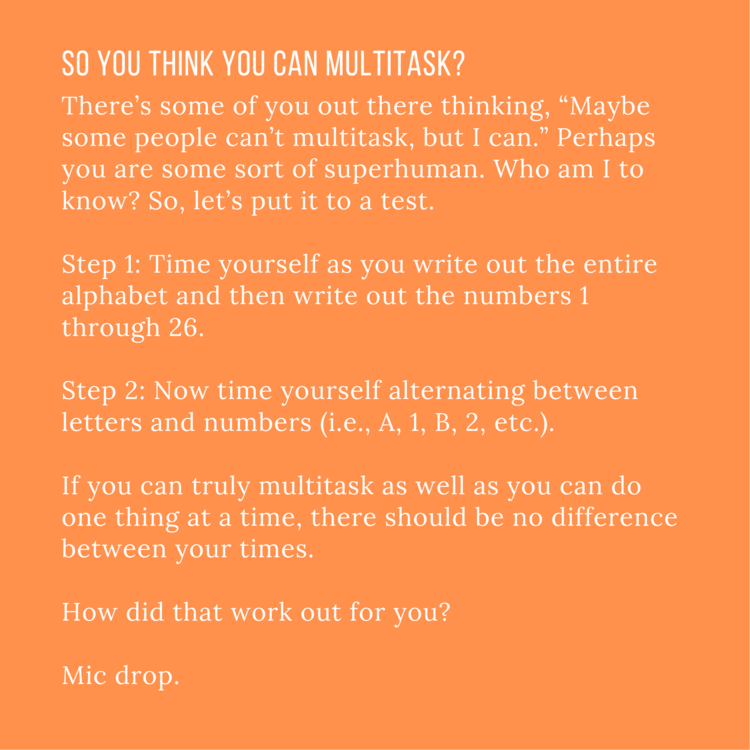A book review of Cal Newport’s A World Without Email: Reimagining Work in an Age of Communication Overload.
September 29, 2021
By Rachel Smith
Reading Cal Newport’s latest book, A World Without Email, was like reading two separate books for me. Part 1 was all about how email created what Newport calls the “hyperactive hive mind.” It was full of examples of inventions that had unforeseen consequences and explanations of why our caveman brains can’t handle unanswered messages. I was fully on board.
Part 2 of Newport’s book provided principles and strategies for actually taking action. That’s when I catapulted myself off of the train as it barreled toward Newport’s utopian world without email. No thanks. I changed my mind. That is not where I want to go.
The premise of Newport’s book is that by solving the problem of the inconvenience of relying on synchronous communication, we accidentally destroyed workplace productivity. He asserts that the introduction of email into the workplace created the hyperactive hive mind, “a workflow centered around ongoing communication fueled by unstructured and unscheduled messages delivered through digital communication tools like email and instant messenger services.”
We do check our email a lot. One study found that knowledge workers (those who are paid for the output of their brain rather than what they physically manufacture) check email or an instant messaging service every six minutes. Another study indicated that most workers check their inbox 77 times a day.
We are constantly shifting between doing work and talking about work. Most of us think we’re great at multitasking, but the research shows that multitasking isn’t even a thing. Our brains can do one thing at a time, and the more we switch between things, the lower our cognitive performance.
It’s not as if we can simply ignore incoming messages, either. Humans evolved in an environment in which social ties could mean the difference between living or dying. Even though you know that, logically, ignoring a message for a few hours will not cause you to die of thirst in next year’s drought, your brain will still tell you otherwise. Ignoring social expectations causes our inner caveman a lot of stress.
Newport also brings up the point that while we assume written communication is just as good as a phone conversation or in-person meeting, it simply isn’t. (As someone who would rather be forced to listen to Baby Shark played on bagpipes on a loop than talk on the phone, this pains me.) Written communication is only 5,000 years old. While this sounds like a long time, evolutionarily speaking, it’s tiny. When we are able to hear someone or, better yet, see and hear them, we pick up a lot more of what they are trying to communicate.
Perhaps Newport’s most surprising suggestion in the first half of the book is that we didn’t even mean to adopt the hyperactive hive mind in the first place. It kind of just happened. Again, you can blame your inner caveman. Humans are well-adapted to small-group, free-form communication, so of course that is how we would try and apply email, even if it doesn’t work so well.
This idea of the tools we use actually driving human behavior—a phenomenon called technical determinism—is not new. Newport tells the fascinating story of how the invention of the stirrup is what caused the entire rise of feudalism in medieval Europe. (Thanks a lot horse people. You’re responsible for the rapid spread of the bubonic plague and Genghis Kahn. Good job.) A much more recent example of technical determinism is the “like” button on Facebook. It was created to simply clean up the comments section, but ended up completely altering the way we all interact on social media.
Newport is right. What started as just another way to leave someone a message has completely changed the way we function. Which brings us to Part 2.

In the second half of the book, Newport lays out the principles for a world without email—or at least a world in which email does not control our lives as much as it does now. Part 2 had no cavemen, I found it tedious, and I had some major issues with some of Newport’s ideas.
Part 2 is really an investigation of how we can “seek workflows that (1) minimize mid-task content switches and (2) minimize the sense of communication overload… while still getting done what needs to get done.”
Newport posits that small tweaks to how we work is not going to be enough to keep us from slipping back into the hyperactive hive mind. To help illustrate this, he talks a lot about Henry Ford’s production line. This is one of my major points of contention with Part 2.
Henry Ford didn’t increase production over his competitors by speeding up the craft method (the original way cars were assembled, in which the car was built in one place and workers came to the car as needed). He threw the craft method out the window and invented the assembly line. Similarly, we cannot make changes to how we email—we need to create new processes so that we can be more productive and less stressed.
Just like Henry Ford, right? But Ford’s assembly line didn’t relieve stress. Yes, workers were more productive, but they didn’t benefit from being more productive. They didn’t finish making the same number of cars they were making before and get to go home early. They were now expected to make more cars. What makes Newport think that more productive knowledge workers will be any different? He talks about shorter workdays and more breaks, but I’m not sure this would be the resulting reality.
My second issue with Newport’s postulations in Part 2 is with his argument that we should be outsourcing what we don’t do well or what someone else could do. He quotes productivity writer Laura Vanderkam. “‘For instance, it doesn’t make sense for licensed, experienced teachers to be grading most worksheets,’ she writes. ‘Automating this (via technology) or else hiring graders to report back the results would free up teachers to dream up better lesson plans and share best practices’”
That sounds good. It sounds great. But let’s get back to reality for a minute. Teachers are already underappreciated and underpaid, but they should hire someone to grade worksheets for them? I don’t think Newport showed this portion of the book to a teacher. If he did, I’m pretty sure that teacher did dream up a better lesson plan about projectiles and how well a book could be thrown at an author’s head.
I agree that our brains were not meant for email, and I’m sure if we had all planned how email was going to be used in advance and not just let it happen, things would probably be less hectic. But I don’t think most of Newport’s suggestions would work in most settings, or even that they wouldn’t end up being just as frustrating but in some other way.
I’ve had so many instances since reading this book where I’ve sent someone an email or Slack message and needed an answer right away. Each time I’ve thought, “I hope they didn’t read Cal Newport’s book, because I need this information now.” Luckily, as Newport writes at the end of his book, “This has to be one of the most exciting and impactful challenges that almost no one is talking about.”
I checked my email 17 times while writing this blog, and I’m not sorry.

We love email so much that we give entire workshops about it. If you’re interested in learning more, contact us at mastery@maestrogroup.co.
Get the Maestro Mastery Blog, straight to your inbox.